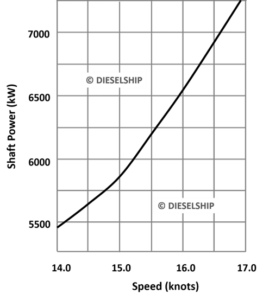Question Set: 2013/DEC (naval-architecture)
Total Questions: 6
- 01
- 02
- 03
Q3. A Ship Of length 130 m has a light displacement Of 4800 tonne with the longitudinal centre of gravity 0.5 m aft of midships. Loading now takes place as given in Table Q3.
Load Mass (tonne) Lcg from midships (m) cargo 3400 38.0 forward Cargo 4000 30.0 aft oil fuel 640 14.5 forward Fresh water 100 55.0 forward Stores etc. 60 35.0 aft Table Q3
Using Worksheet Q3, extract the relevant data from the hydrostatic curves and hence determine the final end draughts of the vessel in sea water of density 1025 kg/ m3. (16)
- 04
- 05
- 06




